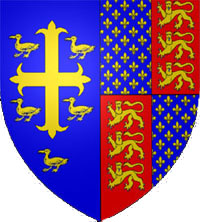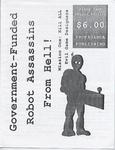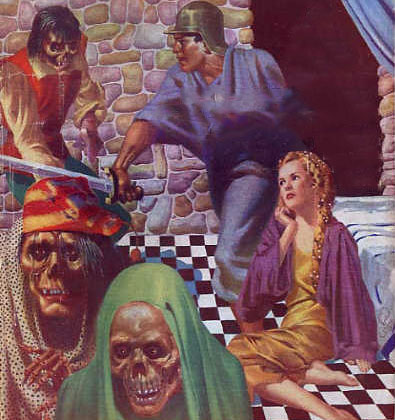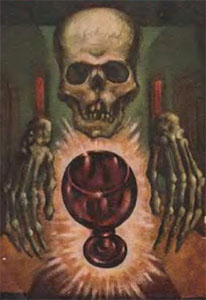
This is one of the dumber things I’ve written. It’s a proposal I wrote to FASA for a Battletech novel at some point between 1996 and 1998. The reason it was dumb is that I was trying to carve out my own little niche of the Battletech universe when, with the benefit of age and hindsight, I can see that there was zero chance that FASA would be interested in doing that.
The reason I’m posting it here is because it was obliquely referenced last month when I talked about the AlterWorlds project that resulted in the creation of The Human Concordat. I mentioned that one of the subsequent AlterWorlds would have been “an insolated planet in the Mechwarrior universe”. My plan had been to repurpose the planet Callashan, described below, into an AlterWorlds setting.
SYNOPSIS
When General Kerensky performed his dramatic Exodus from the Inner Sphere, prompting the beginning of the Succession Wars, he was not alone in his horror at the fierce partisanship which had grown among the members of the Star League. A group of colonists from a conglomeration of worlds formed a coalition which headed into the Periphery in an attempt to escape the madness of the growing Succession Wars.
This group, unlike Kerensky, sought not to return in glorious triumph to reform the Star League, but rather merely to survive in peace far from the power mongers of the Inner Sphere.
In pursuit of this goal they settled a planet they would come to call Callashan, and for a long time the dreams of these colonists were met. Callashan was a world of peace. The memories of the War they had left behind slowly faded as the years passed, and the future looked to be a bright and hopeful time.
But as the memory of War faded, so too did the warning it provided. After nearly three hundred years of peace the world of Callashan began to politically fracture. Now three feudal kingdoms exist (the Houses of Alcrom, Gaos, and Ethaois), each vying for control of the world with the power of the BattleMech.
The story of The Double Helix focusses upon Kalen, the greatest hero — the “Helix” — of the House of Alcrom. In an attempt to form an alliance between the House of Alcrom and the House of Ethaois, Kalen has been betrothed to Natasha; the Helix of House Ethaois.
The marriage, however, will be anything but simple. The leaders of the two houses argue over where the marriage be held… and when… and how. The bride- and groom-to-be have not only never met each other, they have tried to kill each other dozens of times upon the battlefield. The House of Gaos will do anything to prevent the marriage from taking place, including killing and destroying anybody and anything involved.
And if the marriage is this much fun, just imagine what the honeymoon will be like.
CALLASHAN
The advantages of the world of Callashan are numerous, particularly if it were to ever be translated into a setting within the BattleTech or MechWarrior game systems. Because it is isolated and secluded (Callashan has lost the Dropship technology necessary to leave the planet) Callashan would make an excellent stand-alone product.
Callashan also has a potential as a “beginner’s intro” to the BattleTech system and universe: without becoming fully immersed in the history of the Succession Wars, the Exodus, the Clan Return, and all the other innunendo of the main BattleTech universe a player can become comfortably familiar with the ‘small’ world of Callashan before expanding.
Other possibilities of future expansion would include discovery of Callashan by the Explorer Corps project — possibly mistaking the world for one or more of the Clan homeworlds.
But what is Callashan?
Before delving deeper into the plot of The Double Helix I feel it’s important to explain a few things about the local politics, the important people, and the current social structure of the world of Callashan.
Callashan was formed as a Free Colony to escape the terrors of the Succession Wars — following the example of Kerensky, several small colony worlds near the Periphery picked up lock, stock, and barrel and rode out into the unknown in search of a new home under the leadership of a man called Callashan (hence the planet’s name).
Callashan ruled as the first king of this new world, but he died without heir, and a primitive feudal structure was left in his place — a struggle between the houses of Alcrom, Gaos, and Ethaois (the three planets which had first settled this world) for supremacy.
Callashan had not wanted to see war visited upon people who had struggled so long and hard to avoid it, and so he instituted a championship. Each house was to nominate its greatest BattleMech pilot — their Helix — to the Triple Helix, a round-robin competition held once every five years. The house whose Helix emerged victorious would claim the crown for the next five years, when a new Triple Helix would be held.
But kingships are not meant to be prizes, and so, inevitably, this system collapsed beneath petty feuding. The competition of the Triple Helix was moved onto the battlefield. Nonetheless, the position of the Helix still holds tremendous power and respect within the new governments.
Note: Over the years Callashan’s Mechs have developed away from the standards. Therefore, those Mechs whose names are still the same will often be ‘tweaked’ from those currently owned by the Inner Sphere powers. In addition many new Mechs are also present.
MAJOR CHARACTERS
Kalen – Kalen is the hero of our little tale. Kalen is one of the best Helixes in the history of Callashan. He is about 25, sandy-haired, well built and a generally likeable guy. He is also a demon in the cockpit. He feels great respect for, and has a paternal figure in, Lord J’hon (see below).
Natasha – The heroine of The Double Helix, and also the daughter of Lord Optun (see below). Natasha is the youngest to ever achieve the Helix rank. Only 18, her Mech skills are exceeded only by her firery temper. She has olive-skin and dark hair, and serves the House of Ethaois faithfully.
Kenneth – Our primary villain, the Helix of the House of Gaos. In the most classic of traditions where Kalen is “one of the best”, Kenneth is the best. This of course means that by the end of the story Kalen will have barbecued this guy in this cockpit. Ken is extremely talented and about 19 years old. But he’s also a jerk, impatient, and generally immature. He also whines too much. He’s coddled and favored by…
Lord Dysim – Current ruler of the House of Gaos. He puts up with Kenneth, because, on the whole, Kenneth is a superb Mech pilot. House Gaos is the most powerful of the three houses, due in large part to the secret technological programs initiated under Dysim’s reign of power. However, Dysim is also a cruel, corrupt, power-mongering individual. He’s married to…
Lady Eve – Lady Eve is not exactly a “sharp cookie”. She’s easily dominated by her husband, and he cares little for her — she has failed to produce an heir, and is therefore worthless to him. She plays an exceedingly minor role in this novel. In fact, so minor, she has managed to utterly slip off the synposis below.
Giles – Is Kalen’s engineer. Actually he works with the entire Alcrom Helix Guard, but he and Kalen are also the best of friends. He serves…
Lord J’hon – The current ruler of the House of Alcrom. J’hon has taken no wife, nor does it appear he is going to. However, he took Kalen under his wing after the youth’s father was killed in a Mech (his mother having died several years earlier in a cockpit as well), and Kalen is the current heir. He is the mastermind of the marriage which The Double Helix focusses upon, and he’s worked for months with…
Lord Optun – Current ruler of the House of Ethaois, to get the whole thing worked out. Optun, while originally hesitant about the plan, has now welcomed it with open arms. Natasha is his daughter, and with Kalen as the sole heir of the House of Alcrom the two houses will be united under a common rule within a generation. Lord Optun is about ten years younger than Lord J’hon (mid-40s) and is married to:
Lady Julia – Who is generally optimistic about everything… even if the world is about to come to an end. Natasha can’t stand talking to her, usually with good reason. Finally we come to her son,
Prince Andrew – Who is pretty much exactly where he wants to be. He’s slightly younger than Natasha, but still acts kinda like a “big brother” to her.
CHAPTER BREAKDOWN
Chapter One: Kalen is on the field, commanding his Alcrom Helix Guard against a raid of a supply depot by the forces of the House of Ehaois. The battle goes very well for Kalen and his unit, but as final pursuit for destruction of the incursion is about to commence he is ordered back to base. Upon returning to base he demands an explanation for why he was not allowed to finish his assault, particularly as he was about to confront the Ethaios Helix. By way of his explanation he is told of the engagement to Natasha for the first time. Although the truce is “official” both powers have yet to inform commanders, which is why the encounter happened at all. He has just enough time to ask something to the effect of, “Wait, go over that again…” before Chapter One Ends.
Chapter Two: “WHAT?!” Natasha is a little less calm when confronted with the news from her father and mother. They argue for several minutes (this gives us ample time to introduce several political elements of the planet). Natasha then goes off to seek counsel from her brother, Andrew, and they talk for several minutes. At this point we’re no longer totally certain if Kalen is ever going to come back again, so…
Chapter Three: Kalen goes to Giles, his best friend and mechanic, and tells him the as-yet unreleased news of his engagement. They talk for awhile while Giles conducts repairs on Kalen’s mech (or at least some of the Mech’s in Kalen’s group). Also introduced during this time period is Giles’ assistant, David, who becomes crucial later on in the plot.
We now cut to House Gaos, where Kenneth is speaking to Dysim. He’s somehow discovered the marrriage alliance (through a spy — who is actually David, but that isn’t revealed until later to the reader).
Chapter Four: Natasha is onboard the transport shuttle taking herself, her father, her mother, and Andrew to meet Kalen on a border outpost between the areas controlled by the two houses. She’s sullen, and nobody’s attempts to cheer her up succeed. After a couple pages of sullenness a bomb goes off crippling the shuttle which proceeds to crash.
Cut to Kalen and J’hon waiting at the outpost. News comes in of the shuttle’s crash… plus Gaos Mechs are on their way towards the area. Kalen clambers into a mech himself and is off to the rescue.
Cut back to Natasha in the wreckage. Well, it’s not really much of a wreck. Everybody’s shook up, and the shutttle is defenseless and certainly not going anywhere, but no one’s dead (as we quickly ascertain). She takes instant control, organizing everybody and calming people down.
Back to Kalen, who lumbers over the hill and down to the shuttle. He loads up the four people in the shuttle (Natasha, Optun, Julia, and the pilot) into his own cockpit as best as possible. He completes this just as the Gaos mechs come plowing into sight. What follows is an action-packed, multi-page sequence of a running chase betwen Kalen (who is drastically outnumbered) and the Gaos mechs. Kalen is little aided by Natasha’s constant exclamations of advice.
Of course he is eventually successful at getting within range of a sufficient back-up force to scare the Gaos Mechs off, and the chapter ends on a happy note.
Chapter Five: The official “first” meeting of the betrothed couple takes place as planned. Afterwards, everybody gets together and talks for awhile about the mutual future of the two houses, the stunning rescue by Kalen, and other pieces of stupid trivia which is absolutely boring Natasha (from whose perspective this section is told) to tears. She doesn’t like what she sees in Kalen, which is just as well because…
Kalen thinks pretty much the same as she does, as we switch to his perspective for the remainder of the session. He and Natasha are never left alone, and barely speak to each other. In the end, after much argument a plan is laid for the official announcement ceremony, and farewells are spoken.
Finally we cut to House Gaos where we are treated to Kenneth carefully weaseling his way out of responsibility for the failure to successfully complete the sabotage the House Ethaois transport.
Chapter Six: This story switches POV between Kalen and Natasha rapidly, telling of a dual raid by the Gaos on both House Alcrom and House Ethaois. The chapter begins with Kalen talking to Giles, then receiving word of the raid. Our first contact with Natasha is in the cockpit of her Mech shortly after that as she attacks the Gaos forces. This is basically a straight-out battle chapter. The gaos forces are pushing towards two security compounds (one for each House). Natasha successfully prevents the breach of her compound, but Kalen fails to protect his.
Chapter Seven: The official ceremony of the betrothed couple is committed — it is broadcast across the territories held by the two houses. Afterwards Natasha and Kalen have their first real opportunity to speak to each other in length and alone…. it doesn’t exactly take well. They’re at each other’s throats. They control their tempers quickly, however, when their Lords enter, but they aren’t thrilled to hear the next piece of news: Kalen is to accompany Optun, Natasha, and the rest of the Ethaois diplomatic party back and tour their security measures.
When they arrive in Ethaois, however, the tour is cut short by news of a second Gaos attack along the border — again the intended target appears to be the security compound. Kalen suits up with Natasha and they’re off again. (Although this looks awfully close to the last combat sequence, there’s a lot of actual character development between the two.) In addition to their viewpoint, we also follow the Gaos Elemental Leader as he leads his strikeforce into the security compound and withdraws the files needed before blasting out. Although Kalen and Natasha (and Natasha’s Guard) fight hard, they’re too late to stop the extraction (although they take out a good number of Gaos Mechs).
During the end of the fight, however, Natasha’s Mech is seriously damaged and she is forced to eject — Kalen saves her life by attacking a mech preparing to destroy her ejection seat. At this point Kalen begins to analyze how he really feels about her.
Chapter Eight: In the aftermath of the battle Kalen and Natasha begin discussing what the purpose of the raid was. Kalen knows his security compound was also harboring secret research into a next generation of mech, and Natasha also knows that her compound was being used to test new satellite spy equipment. After a bit of brainstorming they realize the only common element between the two compounds was the fact they were security compounds: Meaning the probable target of extraction was the area battle sheets used by the two houses.
Kalen needs to get back to Alcrom and warn his people, and Natasha warns her father.
Chapter Nine: Now the fun starts and the plot starts speeding up. When Kalen tries to board his shuttle, he is denied access by a guard. He is forced to knock out the guard and forcibly take off from the Ethaois compound.
Meanwhile, Natasha has reached her father who is in an uproar about Kalen’s “escape”. Natasha is confused.
It turns out that Optun had no intention of actually going through with the marriage. Instead the entire purpose was to lure Kalen to the Ethaois compound, trap him, and then ransom him for a considerable gain of power and territory from the House of Alcrom. Natasha is disgusted… if nothing else, Kalen saved her life, and now she discovers that she has been utterly deceived by her own parents.
Kalen, for his part, is madly flying towards the Alcrom border. He is being pursued by Ethaois aerofighters, but — after several tense moments of aerial acrobatics — he manages to cross his border and be joined by Alcrom aerofighters who force the Ethaois fliers off. When Kalen arrives at the main Alcrom compound he is greeted by the news that Gaos has begun a full scale assault upon the Alcrom border. J’onn has sent to Optun for assistance, but has been refused. Kalen decides he must have been mistaken about Natasha after all, and that the whole situation was a part of some sick ruse.
The situation on the front is bleak — Gaos has used the battle sheet tactics stolen from the security compound to breach the normal patrols, and they are striking deeply into Alcrom territory — their apparent target being the Alcrom central compound. Kalen is heading out into the thick of things.
Chapter Ten: Kalen leads his men into the battle, and over the course of the chapter they are slowly decimated by the Gaos forces. The chapter ends with Kalen in a nearly hopeless position with his men dropping around him like fleas.
Chapter Eleven: The cavalry rides in — taking the form, in this case, of Natasha and the Ethaois Helix Guard. She’s rallied her loyal soldiers, ignored her father’s orders, and come out to aid House Alcrom. The battle rages on, now switching POV between Natasha and Kalen. They become separated as things begin to look worse and worse for House Alcrom. Kalen is eventually faced off by Kenneth and two other Mechs of House Gaos. Kalen fights a slowly losing battle, destroying one of Kenneth’s supporting mechs, but Natasha (again) shows up in the nick of time to wipe out the second supporting mech. They win the day, signalling a turning point in the battle of House Alcrom.
Chapter Twelve: House Alcrom emerges victorious. Kalen and Natasha return to House Alcrom. Natasha has been disowned by her father, her Helix status cancelled, and the other warriors in her guard decommissioned. Kalen and Natasha face their true feelings for each other, and the book concludes in a glorious ceremony which names Natasha an Honorary Helix of House Alcrom (another first for her) and recommissions her warriors as House Alcrom soldiers.
FUTURE PLANS
The Double Helix ends in such a way that no sequels are necessary. If such sequels are requested, however, they are easily provided. Kalen and Natasha do go on to unify Callashan, but shortly after their reign begins new trouble looms: The Explorer Corps have found the planet; the Inner Sphere has returned.
Go to Part 2: An Untold Novel’s Beginning



 One of the interesting qualities of Elizabethan playwriting is the seamless connection between thought, word, and action. What makes the art of the soliloquy work, for example, is the lack of division between what the character is thinking and what the character is saying: They do not form their thoughts into words, but rather their thoughts leap directly to their tongues and into the ears of the audience. (Which is why Hamlet can advise his players, “Suit the action to the word, the word to the action.”) In a very real sense, the heightened reality of the verse essentially gifts the audience with telepathy: In watching Shakespeare, you are looking straight into the mind and soul of the character as it is stripped bare upon the stage.
One of the interesting qualities of Elizabethan playwriting is the seamless connection between thought, word, and action. What makes the art of the soliloquy work, for example, is the lack of division between what the character is thinking and what the character is saying: They do not form their thoughts into words, but rather their thoughts leap directly to their tongues and into the ears of the audience. (Which is why Hamlet can advise his players, “Suit the action to the word, the word to the action.”) In a very real sense, the heightened reality of the verse essentially gifts the audience with telepathy: In watching Shakespeare, you are looking straight into the mind and soul of the character as it is stripped bare upon the stage. Government-Funded Robot Assassins from Hell – Mission One: Kill All Evil Game Designers (henceforth, for obvious reasons, referred to merely as Government-Funded Robot Assassins) is a card game dating back to 1995.
Government-Funded Robot Assassins from Hell – Mission One: Kill All Evil Game Designers (henceforth, for obvious reasons, referred to merely as Government-Funded Robot Assassins) is a card game dating back to 1995. In a specific investigation, on the other hand, the PCs are poking around with a particular goal in mind. This is where the urbancrawl layers become significant: They’re not just looking for anything of interest, they’re specifically looking for a patron. So instead of randomly selecting content from your available layers, you’ll key the specific content tied to the patron level of your urbancrawl.
In a specific investigation, on the other hand, the PCs are poking around with a particular goal in mind. This is where the urbancrawl layers become significant: They’re not just looking for anything of interest, they’re specifically looking for a patron. So instead of randomly selecting content from your available layers, you’ll key the specific content tied to the patron level of your urbancrawl. The most obvious mechanic here would be a Gather Information check. You could set a universal DC for the check (DC 15 to perform an urbancrawl investigation); or you could vary it by city (DC 15 in the City-State of the Invincible Overlord, but DC 20 in the more tight-lipped City-State of the World Emperor); or you could vary it by urbancrawl layer (DC 10 for the Random Encounter layer, DC 20 for the Vampire layer); or you could define it for each key entry (DC 15 to find the blood den in Midtown, but DC 22 to find the den in the Nobles’ Quarter).
The most obvious mechanic here would be a Gather Information check. You could set a universal DC for the check (DC 15 to perform an urbancrawl investigation); or you could vary it by city (DC 15 in the City-State of the Invincible Overlord, but DC 20 in the more tight-lipped City-State of the World Emperor); or you could vary it by urbancrawl layer (DC 10 for the Random Encounter layer, DC 20 for the Vampire layer); or you could define it for each key entry (DC 15 to find the blood den in Midtown, but DC 22 to find the den in the Nobles’ Quarter).








